Graduated driver licensing
Graduated driver licensing (GDL) is a system that allows new drivers to build up their driving skills and experience gradually, in well-defined, structured stages. Various forms of GDL are already in place in many countries worldwide.
Brake recommends GDL as a vital, life-saving policy because young drivers in all countries are known to be at very high risk of serious and fatal crashes, and GDL helps to address this. This is down to many reasons, including young drivers’ overconfidence, lack of experience, and propensity for risk-taking. GDL addresses these by providing a minimum-length supervised learning period and limiting exposure to some of the highest risk situations, such as night-time driving, for newly qualified drivers.
Learn more: Read our fact page on the risks faced by young drivers.
What is the evidence for GDL?
GDL is already in place in many countries worldwide, including Australia, New Zealand, Northern Ireland, and many US states [1]. There is a wealth of evidence from these countries that GDL is effective in reducing young driver casualties, for example:
Following the introduction of GDL in New Zealand, car crash injuries reduced by 23% for 15-19 year olds and 12% for 20-24 year olds [2].
16 year-old drivers in the US who are subject to GDL have 37% fewer crashes per year, and 17% fewer crashes per mile driven [3].
It is estimated that more than 500 lives could be saved annually in the USA if all states adopted the toughest graduated driver licensing provisions [4].
In Britain, it is estimated that GDL could prevent more than 400 deaths and serious injuries every year, and save the economy £200m annually through crash prevention [5]. Research suggests the public would willingly accept such a system, especially if introduced alongside good communications explaining the benefits of protecting young drivers from the situations where they face the most risk. A survey by RAC Foundation found two thirds (68%) of UK adults, and 41% of young drivers, support the introduction of GDL [6].
A survey by Brake and Direct Line found widespread support for various common elements of GDL. 84% of drivers are in favour of a minimum learning period, 70% support a zero tolerance alcohol limit for novice drivers, and 90% support mandatory lessons on motorways and in difficult conditions for all learners [7].
What should a GDL system in the UK include?
To reduce young driver casualties and bring the UK’s licensing system in line with best practice worldwide, Brake recommends the following measures should be implemented to introduce GDL to the UK.
Learner drivers
Minimum learning period of one year before learner drivers can take their practical driving test, theory test and hazard awareness test.
The learner’s licence should not be fully valid until the learner driver has received a minimum of 10 hours’ professional tuition in a car with dual controls.
Learner drivers, as at present, must be supervised while driving, and the minimum age of accompanying drivers should be raised to 25.
Accompanying drivers should be registered as ‘approved accompanying drivers’ by completing a questionnaire to prove their suitability.
Learner drivers should have the same restrictions placed upon them as novice drivers (see below).
Novice drivers
Drivers should hold a novice licence for two years after passing a practical driving test.
Novice drivers should be allowed to drive unsupervised, but with certain restrictions on their driving, including:
Novice drivers should not carry passengers who are younger than 25 unless supervised. Novice drivers who are parents or carers and need to carry children should be exempt from this restriction.
Novice drivers should not drive between 11pm and 6am, unless supervised or travelling directly from home to work or school.
Novice drivers should have a zero tolerance drink drive limit of 20mg of alcohol per 100ml blood (Brake recommends this for all drivers).
Novice drivers should not drive on motorways.
Novice drivers should be restricted in the size of engine they can drive.
Any driving offences, or failure to comply with the restrictions during this period, should result in automatic disqualification.
Novice drivers should be required to take a further 10 hours of professional tuition, during which they must drive on motorways and at night.
Novice drivers should be required to pass a second driving test at the end of the two year period to help ensure safe driving on all types of roads.
Take action: Support Brake’s too young to die campaign to implement GDL in the UK.
What risks should GDL address?
The recommended system outlined above has been designed to address the following common risks for young drivers.
Inexperience
Research shows that the younger and less experienced a driver is, the greater their crash risk [8]. Under the UK licensing system, drivers as young as 17 can become fully licensed in a few months or even weeks. 89% of young UK drivers complete less than the recommended 40 hours of driving lessons before taking their test [9]. This gives them little time to develop experience before being allowed out on the road unsupervised.
A minimum learning period of one year before taking a theory or practical test means that all learner drivers would have time to develop experience under full supervision before being allowed out alone. A novice driver stage would allow young drivers to drive independently while protecting them from high-risk situations at this early stage in their driving career.
Night time driving
Research has found that night-time curfews are one of the most effective components of GDL for reducing young driver deaths [10], as young drivers are at much higher risk of crashing at night. As research shows that driving for recreational purposes is the main night-time risk [11], journeys to and from work or school/college could be treated as exceptions, which would prevent unfair restrictions on young people who live in rural areas and have less access to public transport and those who do shift work.
Passengers
Young drivers are more likely to crash if they have their peers in the car with them, due to peer pressure and drivers ‘showing off’ to their passengers, as well as passengers causing distraction [12]. This also means that young driver crashes are more likely to result in multiple deaths and serious injuries [13]. Restricting the number of passengers a novice driver can carry would help to keep young drivers and passengers safe. Research from the US has found that GDL reduces crash rates of 17 year-old drivers carrying passengers by 53% [14].
Drink driving
Young drivers who crash are twice as likely to be impaired by alcohol as older drivers who crash [15]. Brake campaigns for a zero tolerance drink driving limit for all drivers (20mg alcohol per 100ml blood, down from the current UK level of 80mg/100ml). However, while a higher limit remains, Brake believes a zero tolerance limit should be implemented for novice drivers as a matter of urgency, due to their higher risk overall and over-representation in alcohol-related crashes [16].


